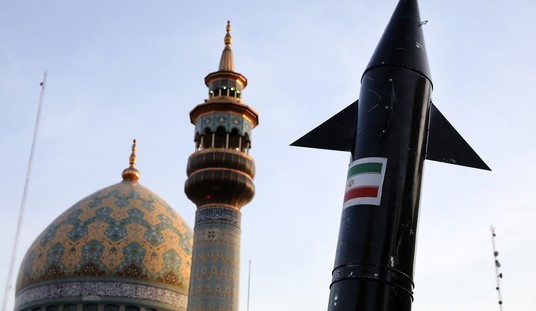WASHINGTON – U.S. forces are ready at a moment’s notice to destroy North Korea should the reclusive nation wage an attack against America, Commander of U.S. Strategic Command Gen. John E. Hyten said Wednesday.
“Our strategic nuclear forces completely overwhelm anything that North Korea can bring to us, so if they want to attack the United States with weapons, it is not going to work out well for North Korea,” Hyten said at the Hudson Institute. “It just won’t.”
Hyten’s comments came a day after President Trump threatened the Democratic People’s Republic of Korea during his first address before the United Nations in New York, where he derided Kim Jong-un as “rocket man” on a suicide mission.
“The United States has great strength and patience, but if it is forced to defend itself or its allies, we will have no choice but to totally destroy North Korea,” Trump said.
Hyten said that although it’s a difficult task, it’s inevitable that North Korea will develop the capability to unleash a nuclear strike on the U.S. The general was asked if North Korea has demonstrated the ability to attach a nuclear payload to its intercontinental ballistic missiles, which Kim has repeatedly tested, sending some over Japan into U.S. waters near Guam earlier this summer.
“We have to look at that capability of North Korea as a matter of when, not if,” Hyten said. “They’re going down that path. They’re building all the capabilities that they need. That means they’re eventually going to get there. Will they get there in 2017, 2018, 2019? I don’t know the answer to that. I see a lot of the detailed intel. I can honestly tell you I don’t know the answer to that question.”
As far as the nuclear payload, Hyten said that U.S. forces understand what the North Koreans have been launching.
“The one thing they have not demonstrated to the United States is the ability to put everything together end-to-end and use it,” he said. “And I’ll just say that when we, the United States, built that (nuclear) capability, that end game was the hardest part for us, and that’s why we built a couple of big test ranges.”
North Korea, he noted, does not have the infrastructure that the U.S. has or the space to test such capabilities, but he said they will eventually figure it out, either by luck, happenstance or trial and error.
“I have to assume that they have the bomb and will figure out how to deploy it on an ICBM, and I have to figure out how to respond if asked by the president of the United States,” he said.
North Korea’s longest-range missile is the Hwasong-14, which is capable of traveling about 6,500 miles, meaning it’s within range of most of the world, excluding the U.S. East Coast, Latin America, Western Africa and Antarctica. While North Korea has claimed that it can fix mini-nuclear warheads to its ICBMs, that claim has never been verified.
U.S. officials have estimated that North Korea has about 60 nuclear weapons. The New START Treaty, signed in Prague in 2010, dictated that the U.S. and the Russian Federation cap their deployed nuclear weapons at 1,550.
Hyten said that his branch has been successful in its mission of nuclear deterrence, as there has not been a nuclear attack on U.S. soil. But convincing enemies to give up their nuclear weapons is the job of politicians, he added. At the same time, he said U.S. Strategic Command is ready to respond.
“If there is an adversary somewhere in the world that thinks they can take a misstep and do something to the United States and attack us strategically, we are ready at a moment’s notice on an order from the president of the United States to respond, and we will,” he said.








Join the conversation as a VIP Member